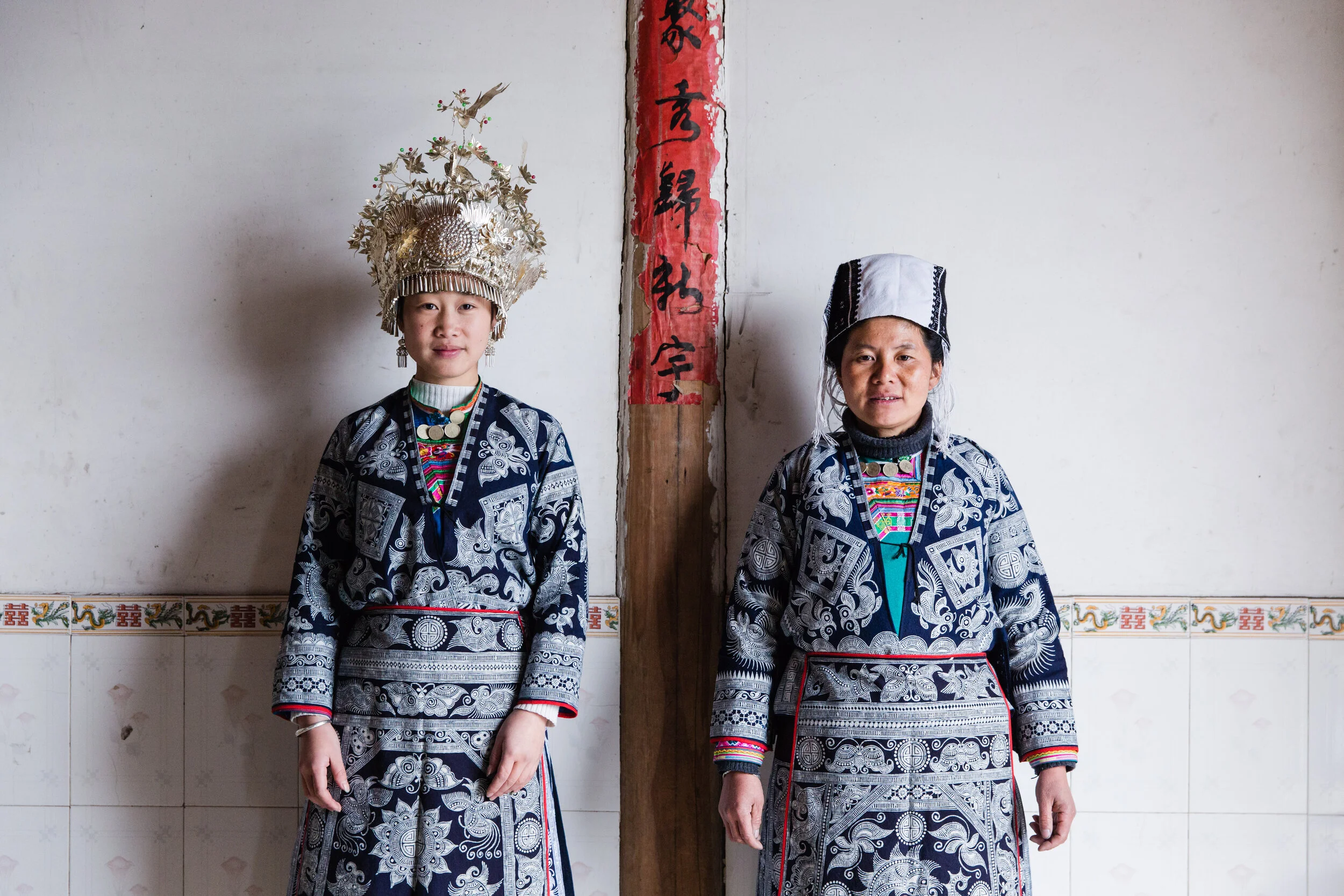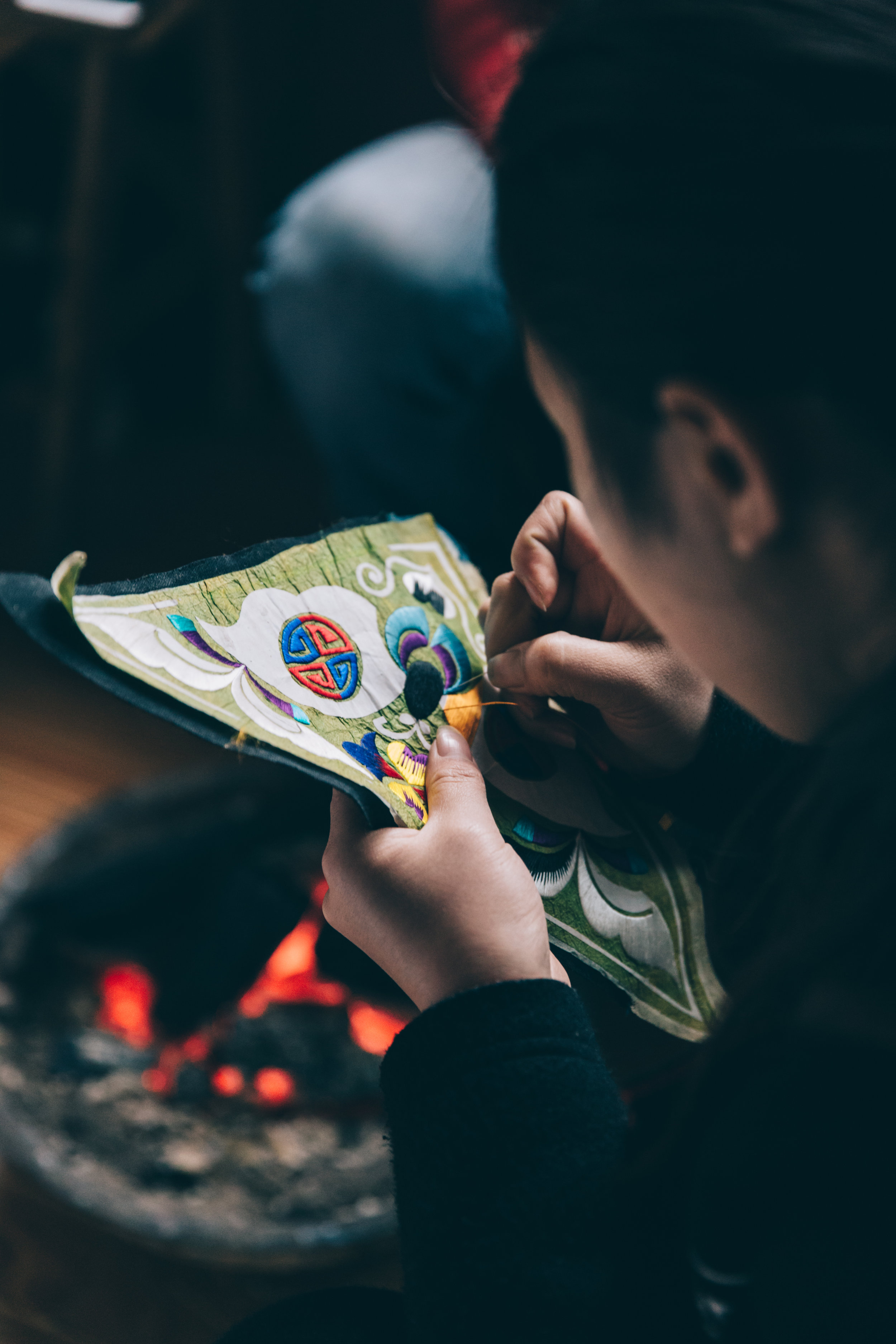Yang Xiu Zhi, Master of Batik and Hundred Bird Costume, China
High up in the mountain, in the midst of the foggy air is the home of Yang, master of batik and the famous Hundred Bird Costume. Yang learned her craft of hand-drawn batik and the making of intricate, high-value hundred bird costume from her Miao mother, the traditional way. Her artworks have been well-recognized internationally and showcased in a provincial museum.
Yang’s batik pieces are thorough and sophisticated, working heritage motifs of butterflies, flowers and birds into a well-finished 3-piece costume. She proudly models them with her daughter-in-law, who is also a talented artisan and Yang’s apprentice.
But the Hundred Bird Costume is what gave Yang her fame.
The Hundred Bird Costume is a labour intensive piece of work, and a well-told story in the folklife of Guangxi Zhuang Autonomous Region. While each tribe may have carried a different version of the story, for the Miao, the origin was from the worship for the bird. During their migration and after they settled down, they would hunt all kinds of birds as their food. Out of gratitude, they began to worship the birds. They not only embroidered bird patterns on clothes, but also decorated the lap with all kinds of feathers.
It takes 6 months to a year to make one – from farming silkworms to making silk-felt sheets, to dyeing the silk-felt, to heavy embroidery of numerous motifs with silk threads, to sewing up to 40 pieces of panels together. Batik fabric are sewn on cuffs and at the joints between front and back panels, completed with twelve hanging panels at the lower part with Job’s tears and feathers for embellishment. The result is an exquisite costume!
As Yang demonstrates the various process of making this intricate costume, she recalls staying at home to learn the crafts from her mother from early age, where schooling was both a faraway trek and a faraway dream.
Since then she has never stopped laboring on this craft. Today she does it so happily that she dubbed her daughter-in-law her successor. Yang freely adds a subtle yet creative twist to the traditional motifs, grateful that the traditional yet personal craft is appreciated by global collectors.













